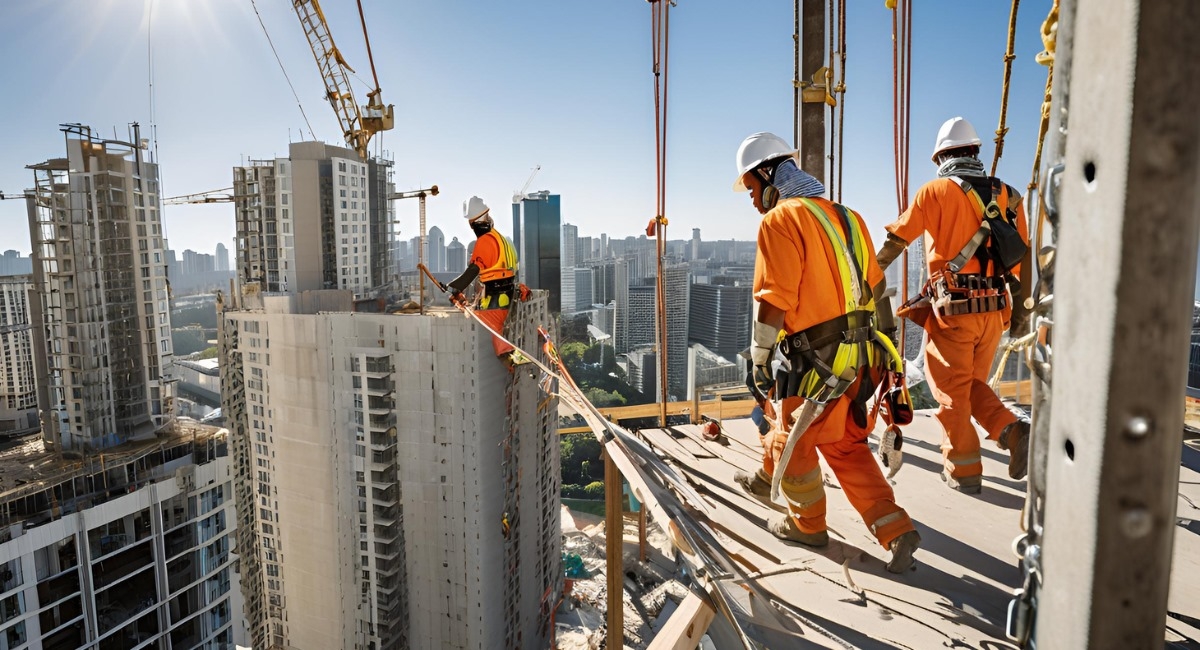What Equipment is Used in Fall Protection?

Key Equipment in Fall Protection: Ensuring Worker Safety at Heights
Overview of Fall Protection
When workers are required to operate at elevated heights, safety equipment becomes essential to protect them from serious injuries. Fall protection includes a wide array of tools and systems designed to prevent or stop falls, ultimately helping employers create a safer work environment. This article delves into the essential equipment used in fall protection, explaining how each component functions to enhance workplace safety.
1. Personal Fall Arrest Systems (PFAS)
Personal Fall Arrest Systems (PFAS) are specifically designed to catch a worker in the event of a fall. They include three main components:
-
Full-Body Harness: The full-body harness is crucial, as it distributes the force of a fall across the body’s strongest areas—such as the thighs, chest, and shoulders. This even distribution minimizes injury, keeps the worker upright, and provides a safer landing should a fall occur.
-
Connecting Devices – Lanyards and Lifelines: Lanyards and lifelines connect the worker to an anchor point. Shock-absorbing lanyards reduce the impact felt by the worker by stretching to slow the fall gradually. Self-retracting lifelines (SRLs), on the other hand, lock quickly to limit the fall distance, providing both freedom of movement and immediate fall arrest.
-
Anchorage Points: Anchors provide secure attachment points for lanyards or lifelines. These points must withstand a significant amount of force (often up to 5,000 pounds per worker attached) to safely arrest a fall.
2. Guardrail and Safety Rail Systems
Guardrails are passive fall protection systems that create a protective barrier between workers and potential fall zones. Commonly placed along edges or high platforms, these systems prevent workers from reaching hazardous areas. Guardrails often include mid-rails and toe boards to secure workers and any tools or materials in use. As a passive system, guardrails require minimal worker involvement, making them an effective and OSHA-compliant safety measure.
3. Safety Nets
Safety nets serve as a secondary layer of fall protection. Installed below work areas, they catch workers who may accidentally fall, providing an additional safeguard when other systems are impractical. Safety nets are common in construction, especially for tasks like bridge or high-rise work, and must meet specific standards for clearance and resilience. Regular inspections ensure they remain secure and undamaged.
4. Fall Restraint Systems
Fall restraint systems differ from arrest systems by preventing workers from reaching a fall edge. These systems use secure harnesses and fixed lanyards to limit movement, keeping workers within safe boundaries. In areas where fall arrest systems may be impractical, fall restraint systems are an effective means of protection.
5. Rescue Equipment
Quick rescue capability is essential after a fall. Rescue kits typically contain ropes, pulleys, and controlled descent devices, allowing other workers or trained rescue teams to retrieve a fallen worker. Having a rescue plan and the appropriate equipment is not only a requirement but also critical for reducing post-fall injuries.
Conclusion
Fall protection equipment is essential for managing the hazards associated with working at heights. Personal Fall Arrest Systems, guardrails, safety nets, and fall restraint systems each play a unique role in preventing accidents. Coupled with effective rescue equipment, these safety measures ensure workers remain protected at elevated sites. Proper training and regular equipment inspections further reinforce these protections, helping employers meet safety standards and safeguard their workforce.
- Industry
- Art
- Causes
- Crafts
- Dance
- Drinks
- Film
- Fitness
- Food
- Spellen
- Gardening
- Health
- Home
- Literature
- Music
- Networking
- Other
- Party
- Religion
- Shopping
- Sports
- Theater
- Wellness
- News


